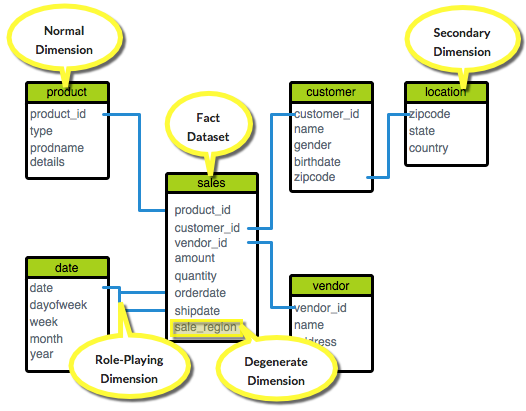Types of Dimensions in a Model
This section explains the different kinds of dimensions you can have in a model, how the data comprising a model dimension is sourced, and how the different kinds of dimensions display on the Canvas.
About reusing datasets
Consider that reusing datasets between the dimension Canvas and the model Canvas - or between multiple dimensions - can cause the engine to take unexpected join-paths at deployment time.
If a data architect wishes to reference the same table from multiple points in the same model, it is recommended to define separate query datasets (QDSs) that select from the desired table. The separate datasets should be used to back each dimension or fact model component. Doing so ensures the generation of run-time join-paths that are readily identified in Design Center.
Note that each QDS must be created from scratch; converting an existing dataset to a QDS does not satisfy the uniqueness requirement.
Types of dimensions
When you define a model in AtScale, you start with your fact datasets. Dimensions are logical collections of attributes that are somehow related to the fact data - either directly or indirectly.
Sometimes a dimension is based on a physical dataset, and sometimes it is an logical abstraction used to organize a subset of dataset columns. Creating, editing, and viewing dimensions on the model Canvas differs depending on the type of dimension it is.
